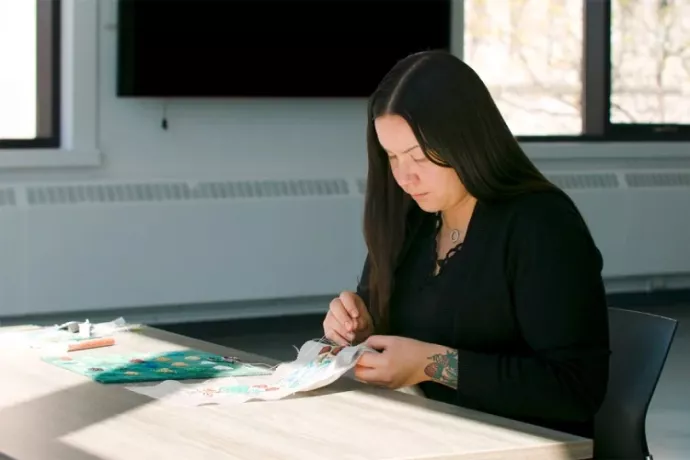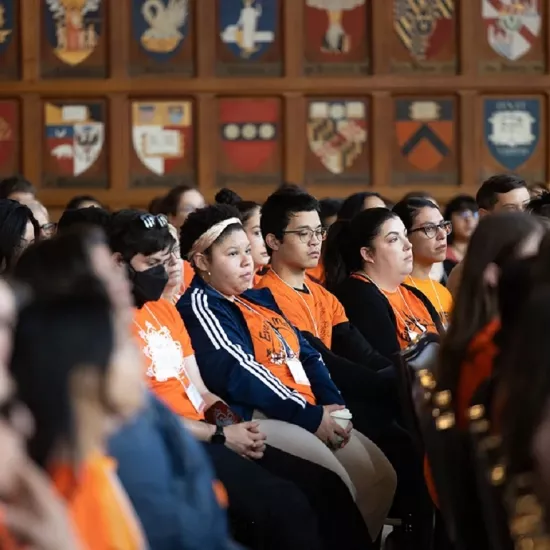‘We belong here’: Indigenous beaded stole to be introduced at U of T’s spring convocation ceremonies
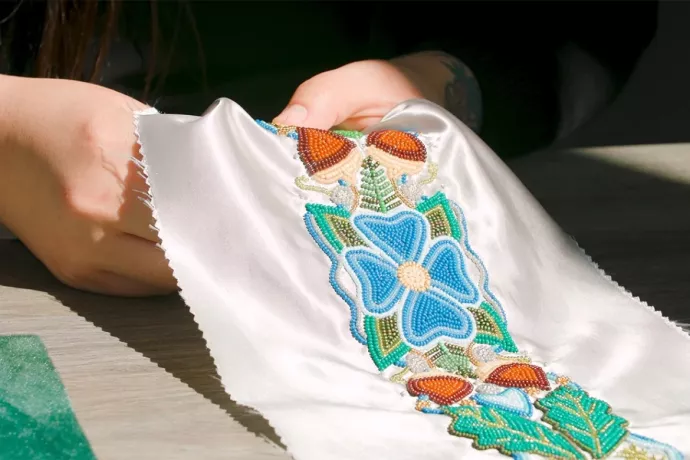
Artist Katie Longboat hopes the beadwork she created for an Indigenous stole to be worn during the University of Toronto’s convocation ceremonies sparks a conversation about reconciliation within the education system.
The stole will be unveiled on June 3 – worn by the Eagle Feather Bearer who leads the chancellor’s procession into Convocation Hall.
The incorporation of the Eagle Feather, Eagle Feather Bearer and beaded stole into U of T’s official convocation ceremonies symbolizes the university’s enduring partnership with Indigenous Peoples and grew out of a recent review of U of T’s convocation.
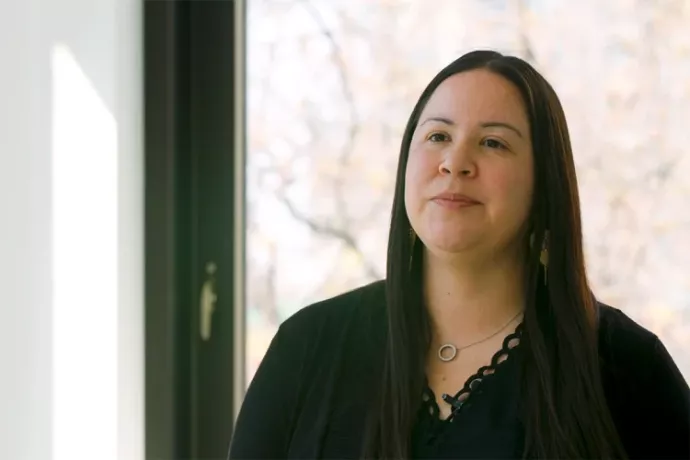
“I think actions like this – incorporating beadwork on a stole and including Indigenous culture and arts – highlight the diversity of First Nations, Métis and Inuit people, and says, ‘Yes, we belong here. I belong here and have a space in post-secondary education,’” says Longboat, a Mohawk and Cree bead artist and educator based in Toronto.
“I hope the message cycles down to the younger generations – the youth who are now entering post-secondary education – and they can feel that they have a place here, too.”
Originally from Six Nations of the Grand River, Longboat began beading when she was 14 years old in an effort to connect with her community. Her design for the stole was inspired by the nature she saw when she walked around the university.
“Some of the elements include oak leaves, acorns – there are pine needles all around the beaded piece,” she says. “The central flower, blue poppy flower and then the trillium flower at the top. There’s a beaver at the bottom of the beadwork, which is representative of the University of Toronto symbols.
“Another element in the beadwork is the waterways. If you look closely, there are what look like streams flowing from the top to the bottom of the work and that represents the waterways in Toronto that are connected to the area.”
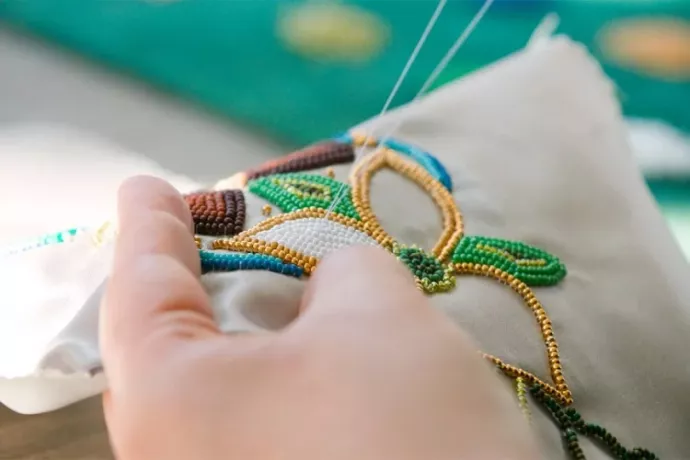
Shannon Simpson, senior director of the Office of Indigenous Initiatives, met with Indigenous leaders from the three campuses to discuss potential themes for the stole. U of T’s Council of Indigenous Initiatives was also involved in the process.
“We wanted something that represents all three campuses and something that signifies the land U of T sits on,” Simpson says.

“[But] we didn’t want to get in the way of the creative process.”
Using two different techniques, Longboat created two separate pieces for convocation – the beadwork for the stole and a beaded stem to hold the Eagle Feather. She used flat-stitch beading for the stole and peyote-stitch bead weaving for the stem of the feather.
In 2017, the Steering Committee for the University of Toronto Response to the Truth and Reconciliation Commission of Canada released its final report, Wecheehetowin.
It called on the university to act in six key areas to engage in the ongoing process of reconciliation. A Convocation Advisory Review Committee was subsequently formed with a mandate that included reviewing ceremony elements with a goal to preserve U of T’s traditions while incorporating Indigenous cultures.
Simpson emphasizes the importance of inclusion and notes that Indigenous students previously felt under-represented.
“I think for a lot of our students, many of them have said they’re the first person in their family to attend a post-secondary institution, or that they feel like they’re the only Indigenous student in many of their classes,” she says.
“By the time they get their degree, they had a lot of firsts in their journey. To see these elements in their convocation, to see the recognition – I think that makes them feel like Indigenous students matter at U of T and that their experience has been valued.”
Simpson says she is excited to have Longboat’s work featured in U of T’s convocation ceremonies.
“Katie does beautiful work and she’s a member of one of our host nations,” she says. “So, that was really important to us as well – to have someone from one of our local communities really be involved in this way.”
The addition of the beaded stole, Eagle Feather and Eagle Feather Bearer are among several initiatives that seek to make convocation more inclusive for Indigenous students. Others include a land acknowledgment and a protocol where Indigenous graduands can choose to wear traditional regalia with academic hood in lieu of an academic gown to their ceremonies.
Simpson says the university’s journey to reconciliation with Indigenous Peoples still requires much work and relationship-building – but that the recent changes are steps in the right direction.
Longboat, meanwhile, hopes the stole’s wearers feel a sense of pride and that Indigenous students receive its intended message: “We belong here.”
